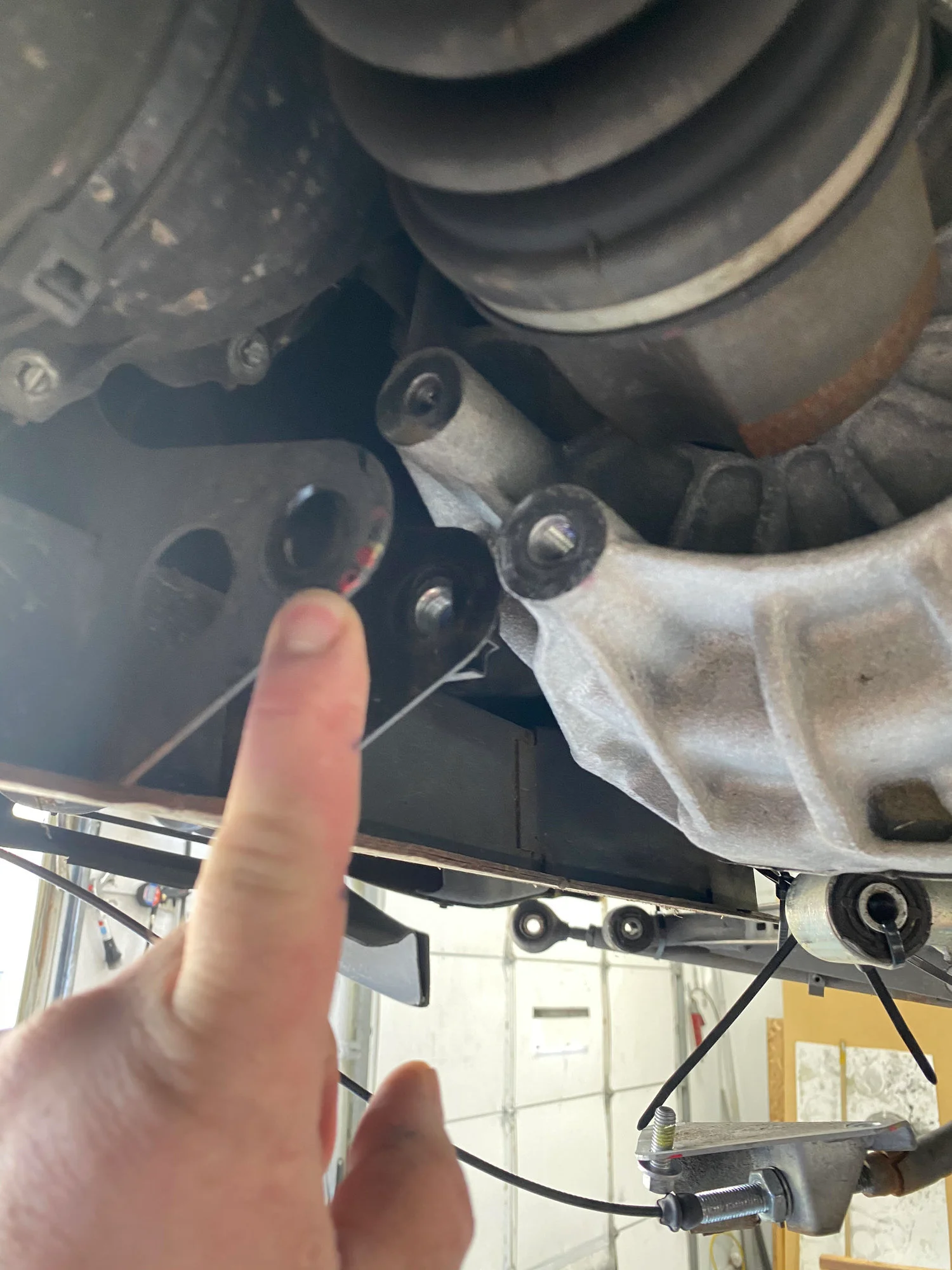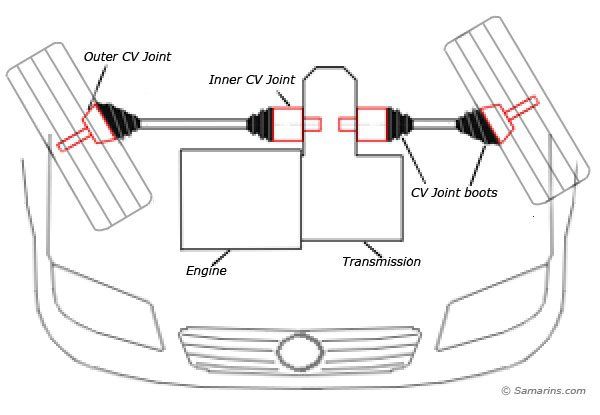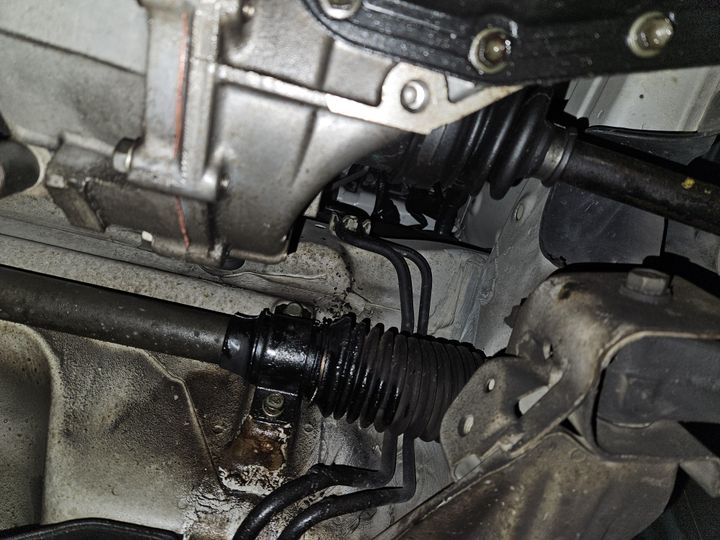


A clunking noise when accelerating is a common issue that many car owners experience. This sound can be alarming and may indicate an underlying problem with various components of the vehicle's drivetrain or suspension system. Identifying the source of the clunking noise is crucial to address the issue promptly and prevent further damage or potential safety hazards.

Over the years, I've learned that a clunking noise during acceleration can stem from various components within a vehicle's intricate system. Here are the most frequent offenders:
| Component | Description |
|---|---|
| Worn Engine/Motor Mounts | These rubber cushions secure the engine to the vehicle's frame, acting as shock absorbers. As they deteriorate, excessive engine movement can occur, resulting in an unsettling clunking sound when you hit the gas pedal or shift gears. |
| Worn CV Joints or Driveshaft U-Joints | The constant velocity (CV) joints and U-joints are responsible for transferring power from the transmission to the wheels while allowing for the necessary angles and movements. When these components wear down, they can create a clunking noise, especially during acceleration. |
| Worn Suspension Components | Tie rods, ball joints, and sway bar links are crucial suspension components that can also contribute to the dreaded clunking sound. As they age and wear out, they may cause excessive movement, leading to noises that become more pronounced when accelerating, turning, or going over bumps. |
| Worn Transmission Mounts | Similar to engine mounts, transmission mounts are designed to secure the transmission in place. When they deteriorate, the transmission can shift excessively, resulting in a clunking noise during acceleration or gear changes. |
As a mechanic, I follow a systematic approach to pinpoint the source of the clunking noise. Here are the steps I typically take:
Visual Inspection
Open the hood and have an assistant start the car
Press the brake, put it in reverse, and gently press the gas pedal while engaging the parking brake
Observe any excessive engine movement, which could indicate worn motor mounts
Suspension and Driveline Inspection
Lift the vehicle and secure it on jack stands
Pry the motor mounts with a pry bar to check for excessive movement, dry rotting, or cracking
Inspect the CV joints, U-joints, tie rods, ball joints, and sway bar links for any signs of play, grease leaks, or damage
Road Test
Take the vehicle for a test drive
Listen carefully for clunking noises during acceleration, deceleration, or when going over bumps
Pinpoint the source of the noise and narrow down the potential causes
Once the source of the clunking noise has been identified, it's time to address the issue. Here are the typical repair instructions I follow:
Safely lift and support the vehicle
Locate and remove the old motor mounts, following the manufacturer's instructions
Install the new motor mounts and torque them to the specified values
Lower the vehicle and road test to verify the repair
Safely lift and support the vehicle
Remove the driveshaft and disassemble the CV joints or U-joints
Install new CV joints or U-joints, following the manufacturer's instructions
Reinstall the driveshaft and torque all fasteners to the specified values
Lower the vehicle and road test to verify the repair
Safely lift and support the vehicle
Remove the worn suspension components like tie rods, ball joints, or sway bar links
Install new components, following the manufacturer's instructions
Torque all fasteners to the specified values and perform a wheel alignment if necessary
Lower the vehicle and road test to verify the repair

Safely lift and support the vehicle
Locate and remove the old transmission mounts
Install new transmission mounts and torque them to the specified values
Lower the vehicle and road test to verify the repair
While repairs are sometimes inevitable, there are preventive measures you can take to minimize the likelihood of encountering a clunking noise when accelerating:
Follow the manufacturer's recommended maintenance schedule for inspecting and replacing:
Engine mounts
CV joints
U-joints
Suspension components
Transmission mounts
Avoid:
Harsh acceleration
Sudden braking
Driving over large bumps or potholes
Address any unusual noises or vibrations promptly by having them inspected by a professional mechanic
When it comes to repairing a clunking noise during acceleration, the cost can vary significantly depending on the specific issue, vehicle make and model, and labor rates in your area. However, based on my experience, here are some approximate cost estimates:
| Repair | Cost Range |
|---|---|
| Replacing engine/motor mounts | $200 - $500 |
| Replacing CV joints/axles | $200 - $400 per axle |
| Replacing suspension components (tie rods, ball joints, etc.) | $100 - $400 per component |
| Replacing transmission mounts | $200 - $500 |
It's important to note that these are rough estimates, and the actual cost may be higher or lower depending on your specific situation. I always recommend getting a quote from a reputable mechanic before proceeding with any repairs.
A clunking noise when accelerating can be a frustrating and potentially costly issue, but with the right knowledge and expertise, it's a problem that can be effectively diagnosed and resolved. As a mechanic, I've seen firsthand the relief on my customers' faces when they no longer have to endure that unsettling sound. By following the steps outlined in this article, you can better understand the potential causes, take preventive measures, and make informed decisions about the necessary repairs. Remember, addressing unusual noises promptly can save you from more significant issues down the road, ensuring a smoother and safer driving experience.
In addition to clunking noises, knocking, rattling, or grinding sounds during acceleration may also point to worn components like engine mounts, CV joints, or suspension parts. Pay attention to any unusual noises and have them inspected promptly.
After replacing suspension components like tie rods or ball joints, it's generally recommended to have a proper wheel alignment performed. An improper alignment can lead to premature tire wear and handling issues.
In most cases, it's advisable to replace the entire CV axle assembly rather than just the joint itself. This ensures a proper fit and prevents potential issues down the road.
It's a good practice to visually inspect your engine and transmission mounts during routine maintenance intervals or whenever you notice any unusual noises or vibrations.
Yes, driving habits like aggressive acceleration, sudden braking, and frequently driving over potholes or speed bumps can accelerate the wear and tear on components like engine mounts, CV joints, and suspension parts.
While it may be possible to drive for a short period with a clunking noise, it's generally not recommended as it could lead to further damage or safety issues. It's best to have the issue diagnosed and repaired as soon as possible.
While some experienced DIY enthusiasts may be able to replace certain components like engine mounts or CV joints, it's generally recommended to have a professional mechanic handle these repairs, especially for more complex suspension or driveline components.
During a road test, pay close attention to when the noise occurs and whether it seems to be coming from the front or rear of the vehicle. This can help narrow down the potential causes and guide the diagnostic process.
While less common, a loose or damaged exhaust system component can sometimes cause a clunking or rattling noise, especially during acceleration. This should be inspected and ruled out as a potential cause.
Driving with severely worn CV joints or U-joints can lead to complete failure, resulting in a loss of power transmission to the wheels and potential damage to other components. It's important to address these issues promptly to avoid being stranded or causing further damage.

Sarah isn't your average gearhead. With a double major in Mechanical Engineering and Automotive Technology, she dived straight into the world of car repair. After 15 years of turning wrenches at dealerships and independent shops, Sarah joined MICDOT to share her expertise and passion for making cars run like new. Her in-depth knowledge and knack for explaining complex issues in simple terms make her a valuable asset to our team.













